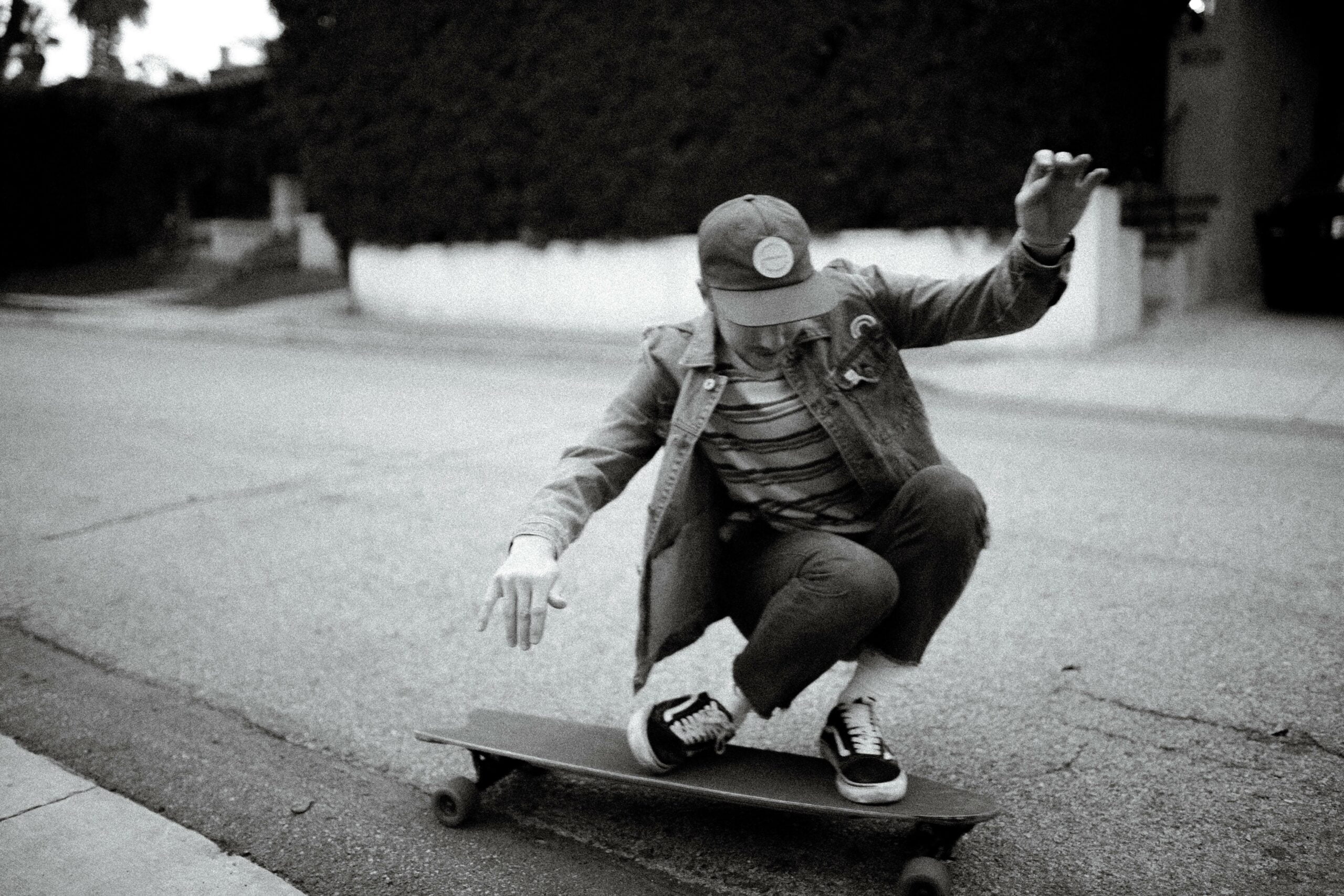We invite you to enter the domain of automotive history as we undertake an intriguing exploration of the perennially popular van. This article aims to provide a comprehensive analysis of the evolution of vans, tracing their historical development and identifying the key factors that have contributed to their sustained prevalence. With an extensive background as an automotive correspondent and an unwavering enthusiasm for automobiles, I shall expound upon the complex interplay of design, consumer inclinations, and cultural milieu that have influenced the emergence and evolution of vans. I cordially invite you to accompany me as I delve into the captivating narrative surrounding the surge in van popularity and its profound societal ramifications.

Vans Popularity History
Decades of history comprise the illustrious and intriguing history of the footwear brand Vans. In this engrossing exploration, we shall traverse the evolutionary trajectory of vans, examining the pivotal factors that have contributed to their enduring allure and ascent to prominence.
A symbol of liberty and nonconformity, van culture emerged during the turbulent and unrestricted 1960s. Amidst that period’s youth, the allure of traversing the open road in their hippie mobiles and venturing on adventures along Route 66 and beyond captivated them. Vans aptly encapsulated the ethos of the 1960s through the provision of ample interior space that encouraged personalization and expression. The prevalence of vans in this era can be attributed to their affiliation with the counterculture movement, which represented the audacity and uniqueness of the youth.
The 1980s were a period characterized by the prevalence of punk rock music and a growing sentiment of adolescent defiance. Vans emerged as the preferred footwear brand among defiant youth, reflecting the prevailing anti-establishment sentiments of the punk subculture. The 1982 film “Fast Times at Ridgemont High” unveiled an emblematic stoner character decked out in Vans footwear, thereby propelling the brand to global recognition. As Vans’s popularity increased at an exponential rate, so did the need for their signature checkerboard pattern, which came to be associated with skateboarding and defiant youth culture.
In the early 2010s, Vans further solidified its position as a dominant force in the sportswear industry, propelling its standing as a footwear brand. Vans’ surge in prominence may be ascribed to their extensive associations with skateboarding culture and their partnerships with notable musicians. The brand garnered attention from both fashion-forward individuals and adrenaline enthusiasts due to its participation in extreme sports. Vans solidified its position as a lifestyle brand by capitalizing on its customers’ inclination towards innovation and personalization. A considerable number of individuals resorted to personalizing their Vans footwear, and the company frequently incorporated their distinctive designs into official models.
Vans’ enduring popularity can be attributed, in part, to the brand’s straightforward construction. Vans shoes feature a canvas upper and a waffle sole, with an emphasis on both durability and comfort. Their simplicity of design facilitates style versatility, rendering them appropriate for an extensive array of fashion trends. Vans’ unwavering dedication to simplicity has been instrumental in sustaining its iconic status in the footwear sector and striking a chord with customers across all age groups.
Following its initial public offering in 1991, Vans initiated its global market expansion. By introducing new models, the brand consolidated its position as a global leader in athletic apparel. Vans, in spite of this expansion, maintained its skateboarding legacy by fusing innovation and authenticity. It established a strong association with street fashion and youth culture, capitalizing on its robust foundations while also embracing collaborative ventures and emerging market prospects.
In order to fully grasp the allure and influence of Vans, it is critical to acknowledge its affiliation with diverse cultural movements, its steadfast dedication to customization, and its enduring simplicity. Once considered a countercultural emblem, the checkerboard pattern of Vans has since come to symbolize for many not only a brand but also a way of life. It has had a substantial impact on sports, music, and fashion, and its continued prevalence attests to its capacity to adapt to new trends.
In summary, the chronicle of Vans is an intriguing narrative that intricately relates to the progression of mainstream culture. Throughout its trajectory of meteoric rise and widespread acclaim, Vans has consistently made a lasting impact on the footwear sector. Collaborations with musicians, affiliations with counterculture movements and skateboarding culture, and partnerships have all contributed to its enduring popularity. Vans remains a preferred brand among numerous individuals, regardless of whether they are participating in a music festival, visiting the skate park, or simply embracing a lifestyle of self-expression. Therefore, put on your Vans and enter a realm where originality, creativity, and fashion converge.
“Vans, with its rich history and deep connection to cultural movements, has become an iconic brand loved by generations.”
Vans, the iconic shoe brand, has a rich history that dates back to the 1960s. If you’ve ever wondered, “When did Vans become popular?” then you’re in for a treat. Head over to our article on the subject, where we delve into the fascinating story behind Vans’ rise to fame. Discover how they transitioned from catering to skateboarders to becoming a global fashion phenomenon. Don’t miss out on this riveting piece! Click here to learn more about the history of Vans becoming popular: When Did Vans Became Popular
FAQ
When did the prevalence of vans originate?
Vans became increasingly popular during the 1960s, when they came to symbolize the liberation and nonconformity of the adolescent culture of that era. In the 1980s, it experienced a meteoric rise in popularity, becoming closely linked with defiant punk rock and counterculture. Vans rose to prominence in the footwear industry during the early 2010s due to its affiliation with skateboarding culture, partnerships with musicians, and foray into the realm of extreme sports.
How did Vans footwear come to the attention of the world?
The infamous stoner character from the 1982 film “Fast Times at Ridgemont High” brought Vans shoes to the attention of audiences around the world. By donning Vans footwear, this individual contributed to the brand’s surge in prominence and broadened the audience’s exposure to its renowned design.
Did the popularity of Vans shoes increase as a result of customization?
Yes, Vans footwear has been modified frequently by its customers. Vans incorporated the designs of numerous individuals who adorned their footwear with paintings and drawings as official models. The culture of customization contributed to the allure and distinctiveness of Vans footwear.
What factors have contributed to Vans’ footwear industry icon status?
Its iconic status has been significantly influenced by the canvas upper and waffle sole that comprise Vans’ simple construction. In addition to its affiliation with numerous subcultures and youth movements, the footwear industry has acknowledged and admired its enduring popularity on account of its comfortable and long-lasting design.
How has the Vans brand developed throughout the years?
Vans, in keeping with its skateboarding roots, has ventured into novel markets and formed partnerships. Since going public in 1991, it has emerged as a global leader in the sportswear industry. Vans, a brand renowned for its enduring appeal and robust cultural allegiances, has effectively expanded and diversified its operations while upholding its fundamental essence.
- Unveiling Bernhard Caesar Einstein’s Scientific Achievements: A Legacy in Engineering - July 15, 2025
- Uncover who is Jerry McSorley: CEO, Family Man, Business Success Story - July 15, 2025
- Discover Bernhard Caesar Einstein’s Scientific Contributions: Unveiling a Legacy Beyond Einstein - July 15, 2025















